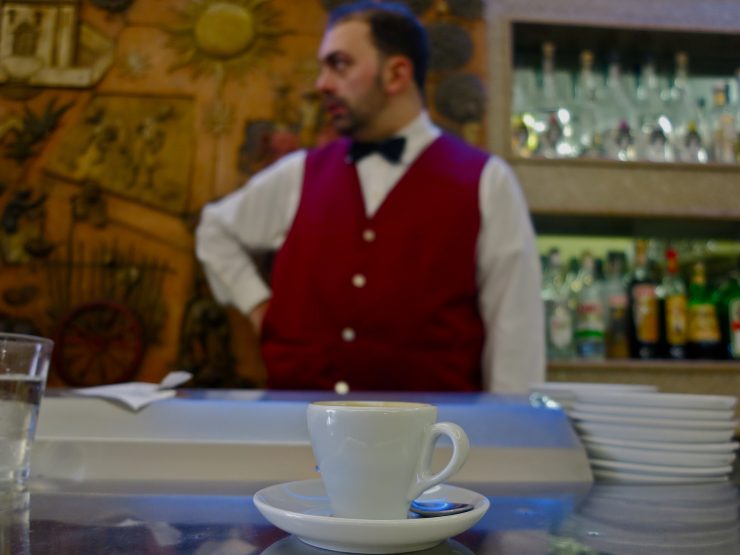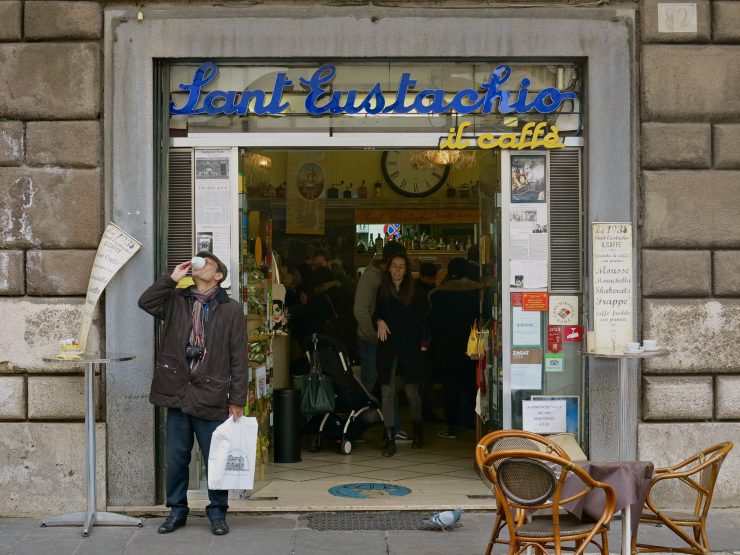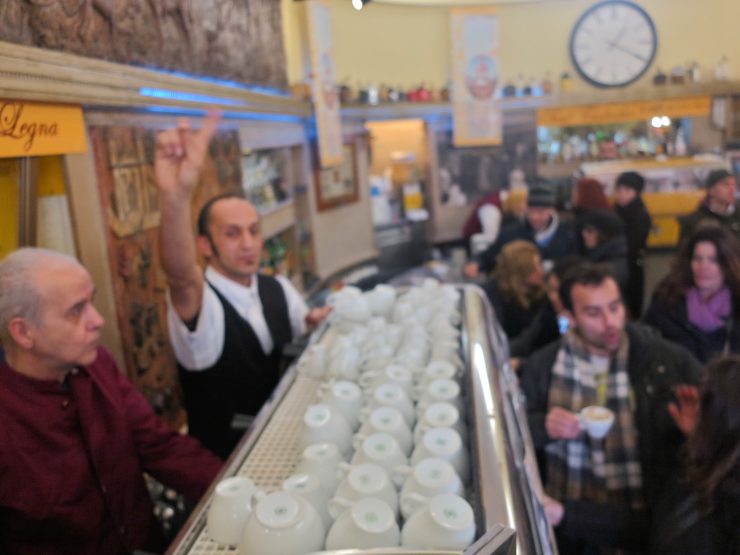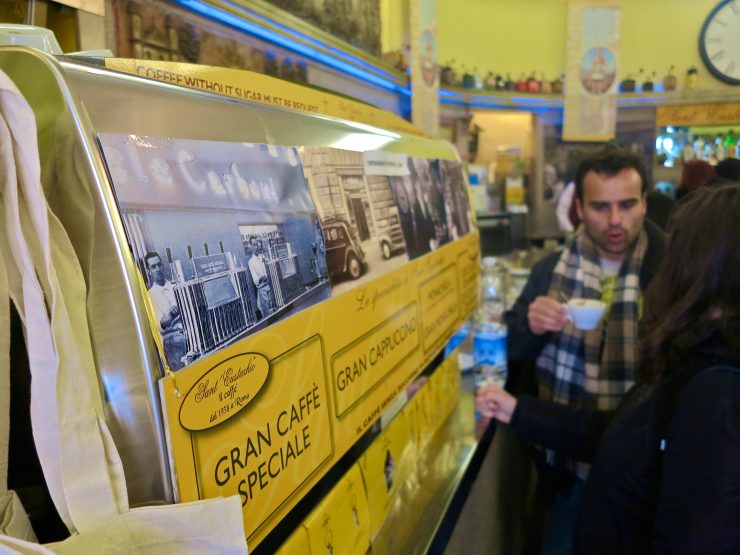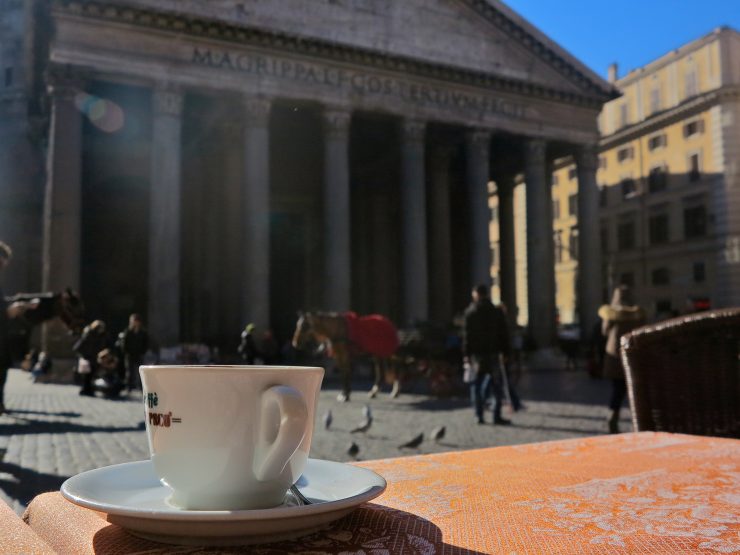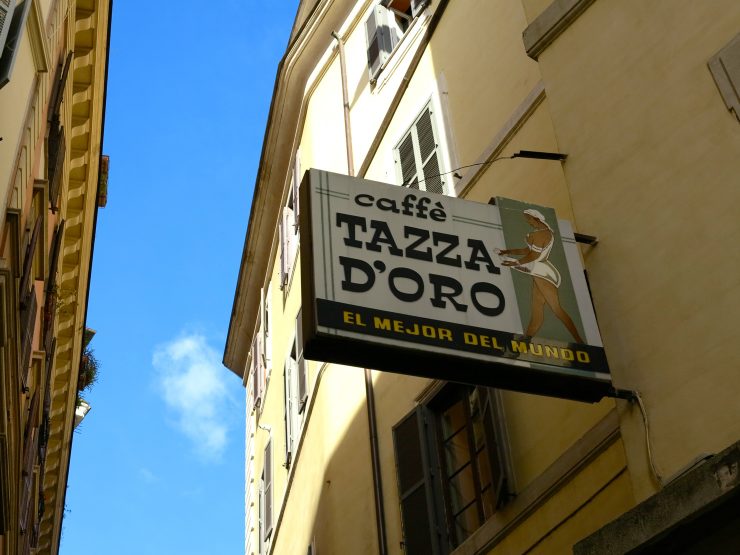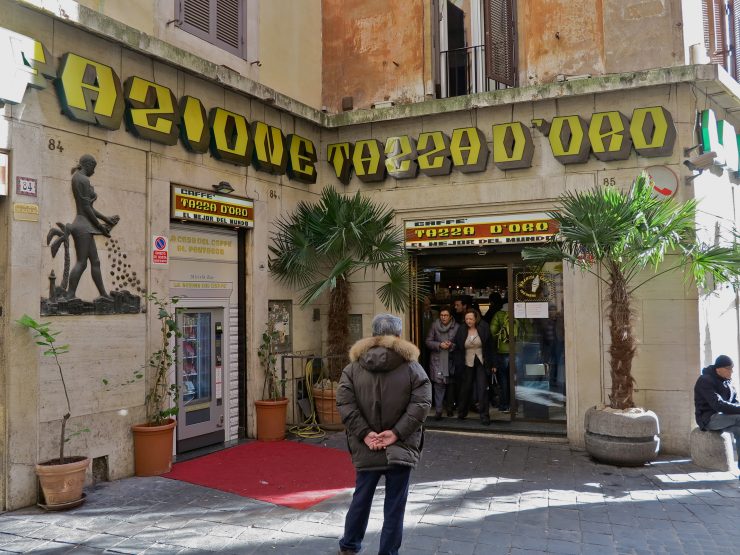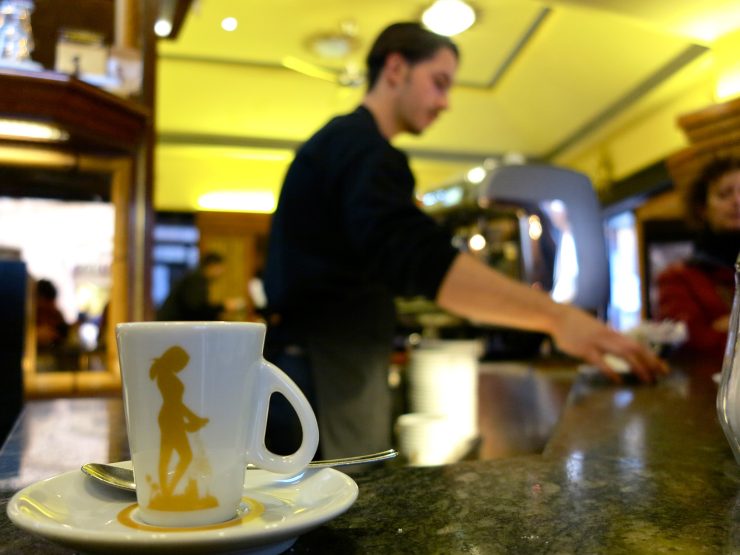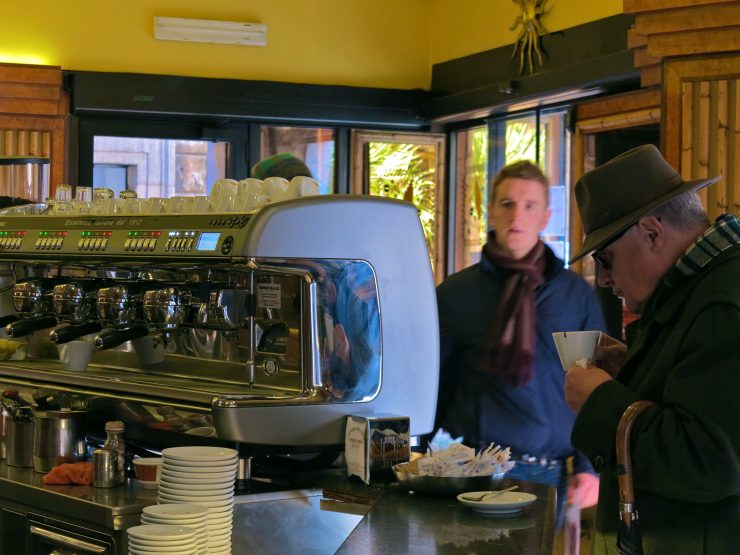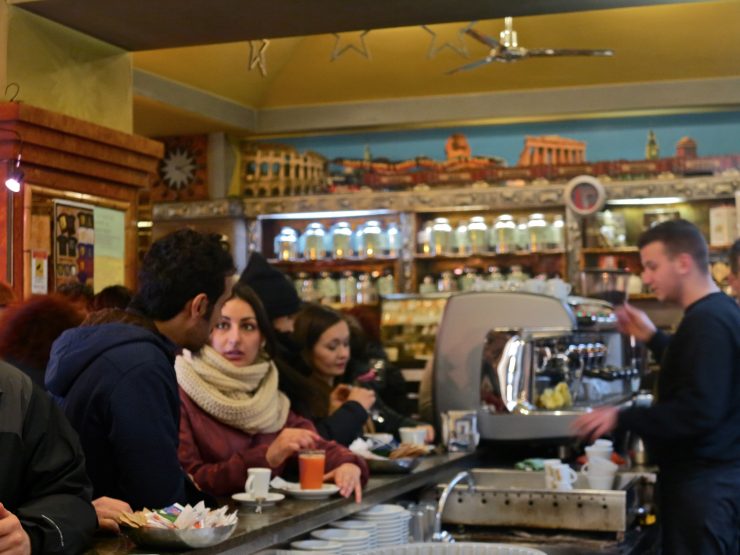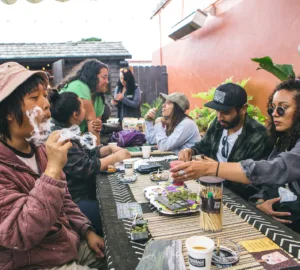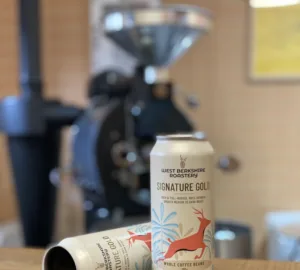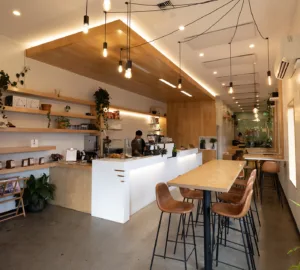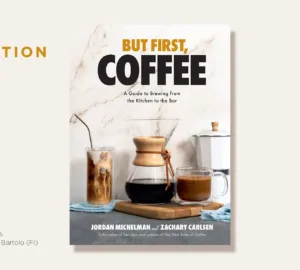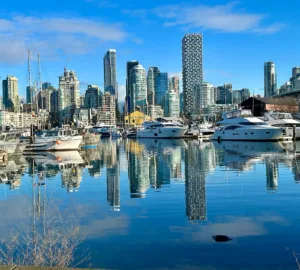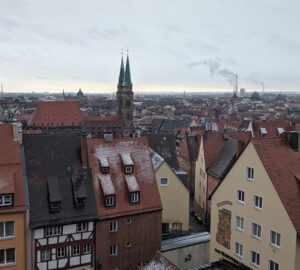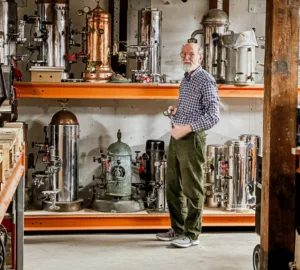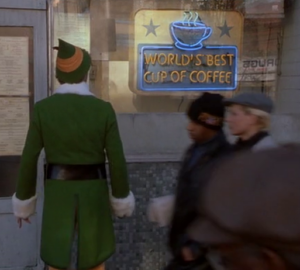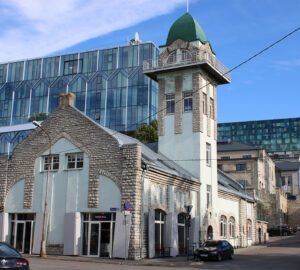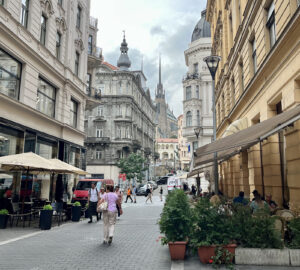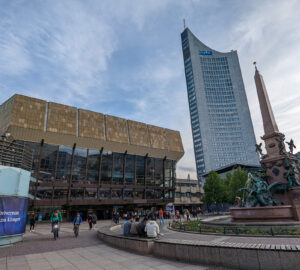A Roman barista, dressed in a fetching bow tie and burgundy vest, drags a porcelain saucer across the counter towards me. Around him, Italians storm the bar with espresso orders, waving dockets in a violent bid for his precious attention. The barista, however, is oblivious. Staring into the distance with intense focus, he’s in what elite snipers refer to as “the zone.” I’m poised to ask him a question, but his careful efforts to avoid English and eye contact make it kind of difficult. Until, lowering a frothy looking espresso onto the bench, he offers a single word, “sugar.”
I think it’s a question, but before I can answer he turns away with uncanny speed, loading my cup with sugar as he pivots.
This is Sant’Eustachio, an institution of Italian espresso, which, along with Tazza d’Oro, constitutes two of the most respected espresso bars in Rome (and by extension Italy). It was here at Sant’Eustachio that my gorgeous lips met Italian espresso for the first time. And what a wild ride it was. Bracing myself for the robust and bitter glory I had come to expect from Sydney’s Italian expatriates, only to encounter the concept of sugar by default and an intriguingly foamy espresso.
As it turns out, this light and foamy approach is Sant’Eustachio’s signature style, the method for which is very cloak-and-dagger. Tirelessly safeguarded by cagey baristas and privacy shields bending around the edges of their espresso machine, the secret of the mysteriously firm crema remains well protected. It’s all very enigmatic, but in spite of their efforts to frustrate coffee espionage, the faint taste of egg whites and persistent sound of furious whisking has left me with a pretty solid theory.
Sant’Eustachio, like Tazza d’Oro, has been slinging its foamy espresso for over 70 years. Since around the time Starbucks’ founding members were probably conceived. Since then, I’m told that not a lot has changed here. The same coffee-stained mosaics pave the floor. Elderly Romans still crowd the bar with patriarchal entitlement, knocking back the same suspiciously frothy espressos their fathers did. And with the exception of Korean tourists and awkward Sprudge writers, people continue to honour the Italian custom of sharp and fast coffee consumption.
Yes, loitering at the bar is a taboo practice in Rome—if you’re going to take your time, you should be civilized and relax at an outdoor table (and pay more for the privilege). Around the corner at Tazza d’Oro, the slightest impression of MacBook camping is punishable by ultra-fierce barista glares and heavily delayed service. Hostility not without cause, as speed represents an essential part of the Roman coffee ritual. A ritual complimented by the kind of archetypal espresso served at institutions like Tazza d’Oro and Sant’Eustachio.
Much like football and the luxurious use of hand gestures, this style of espresso is a matter of national pride for Italians. The unrivaled potency of their coffee in particular, seems to be a point of infinite vanity. As pretty much every Roman told me repeatedly, their hands passionately mashing the air, they like their coffee as “strong” as humanly possible—a feat usually achieved via dark-roasted, multi-bean blends. Traditionally, this style of espresso is served with sugar to balance its inherent bitterness, which, coupled with thick (and in some cases whipped) crema, forms something in the realm of liquid tiramisu.
For those of us whose first espresso experiences predated terms like “third wave,” this is a deeply nostalgic taste. It’s also a style waning in popularity since the advent of specialty coffee, and often a style diehard advocates of progressive coffee culture are quick to dismantle in support of lighter roast profiles. Rome however remains a sanctuary for this genre of coffee, and its rapid, lively form of consumption at all times of day. Considering it was here that Italians birthed the very concept of espresso at the beginning of the 20th century, it’s about as honest and atmospheric as this enduring subculture gets.
To be clear, there is no secret war waging between progressive (specialty) coffee culture and the more traditional, Italian ethos. As one barista put it to me at Tazza d’Oro, “This is a totally different thing I guess.” There are, however, some conflicting advantages to each that are worth pointing out. Where specialty coffee draws on the demand for constant innovation, Italian coffee endeavors to preserve everything as it was, holding steadfast to tradition and the retention of time-honored techniques. As a concept defined by the impermanence and fluidity of its conventions, specialty coffee, by its very nature, challenges the merits of these traditions. In doing so, it ensures constant improvement, but sacrifices much of the sentiment that makes Italian coffee culture so appealing.
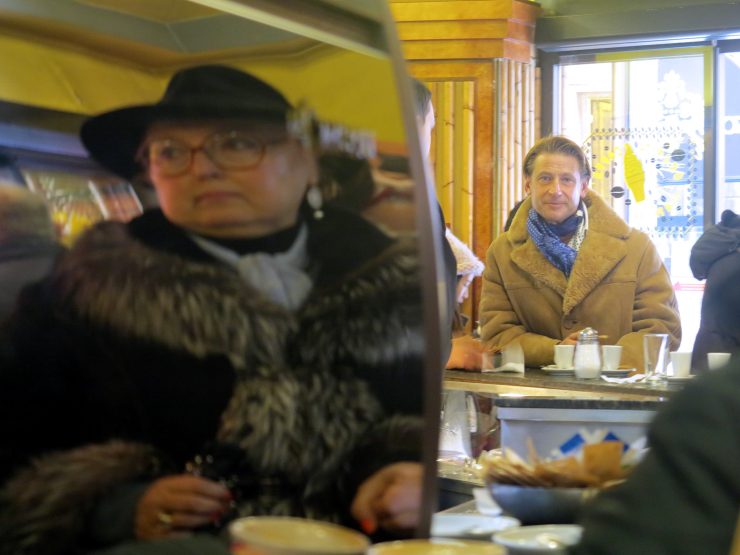
In this respect, Italian espresso culture, and champions of it like Sant’Eustachio and Tazza d’Oro, offer something far beyond the novelty of dark-roasted blends and beardless baristas. Rome’s coffee, much like any other Roman attraction, offers an opportunity to absorb oneself in the origins of a grand, timeless event. A culture somehow unencumbered by the forever shifting trends of this modish coffee scene of ours. In a sense, institutions like Sant’Eustachio and Tazza d’Oro are our last pieces of original espresso culture.
Henry Brink is an Australian travelling abroad who has written for Broadsheet and others. Read more Henry Brink on Sprudge.











